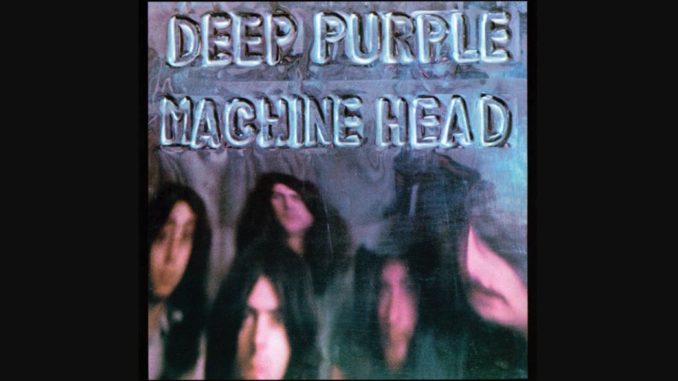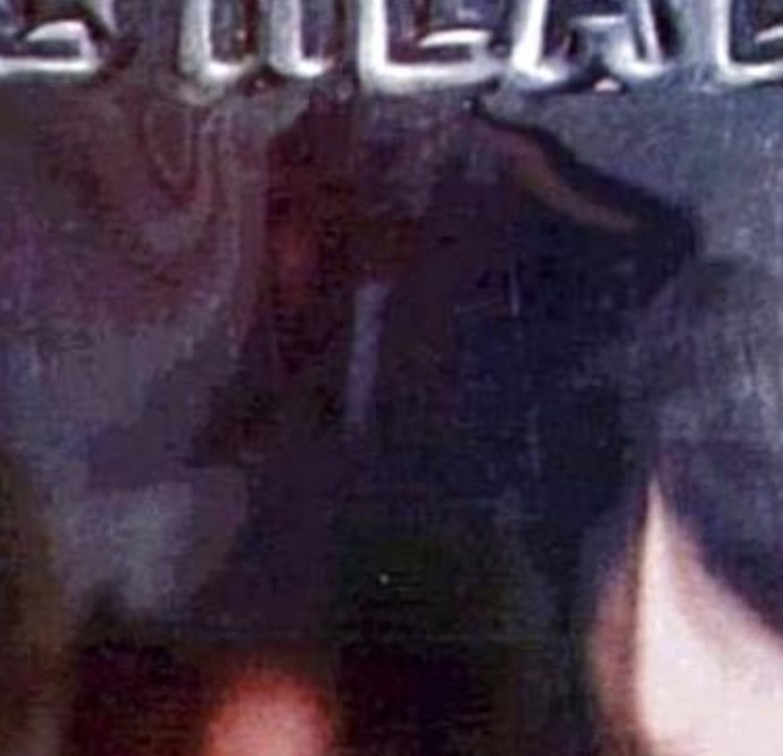
Machine Head is the sixth studio album released by the English rock band Deep Purple. It was recorded in December 1971 at Montreux, Switzerland, and released on 25 March 1972 on Purple Records.
This is without question Deep Purple’s most commercially successful album, topping the charts in several countries, including #1 in the UK. It contains songs that aren’t just Deep Purple classics, but defining and influential classics in the development of traditional metal – songs like Smoke On the Water, Highway Star, Space Truckin’ and several others. The album continues to be viewed favourably by music critics and has been reissued several times.
The cover art is as innovative as the music found on the disc, but perhaps it isn’t immediately striking. The image is out of focus and made up of unusual, weird shapes. When you first see it for the first time, you almost need to spend a few seconds taking it in before you fully see and understand what’s depicted.
In the 25th anniversary CD edition of the album, the cover art is only briefly mentioned in Simon Robinson’s otherwise extensive liner notes: “The original album sleeve still looks luxurious twenty five years on. The cover shot was achieved by die stamping printing type into a sheet of polished metal, which was then propped up as a mirror and photographed with the band reflected in it (the camera man can be made out if you look carefully!).”
As this is the photographer’s only mention in that text, let’s introduce him: Shepard Sherbell.
Sherbell was born in New York City on 12 September 1944. He had relocated to London and established himself as an up-and-coming photographer in time to capture a number of the most popular musicians of the 1960s including the Beatles, The Who (especially Keith Moon), Cat Stevens, and Jimi Hendrix. He was active until the first few years of the 1970s, capturing iconic images of Badfinger, the Rolling Stones, Frankie Valli, Humble Pie and Grand Funk Railroad – and Deep Purple.
The band had the title Machine Head ready. They may have arrived at it by playing the association game. There was no song on the album with that title, although there was a song about a car, a song about a space ship, and the term heavy metal had been coined… metallic, metal, machines… hmm. Making metal sculptures of all band members heads? No, there was no time. How about representing their heads in metal in some other way?
In the liner notes, bassist Roger Glover and then Purple manager John Coletta is credited for coming up with the cover design. This may mean that they suggested to Sherbell that they could have the band’s reflection showing on a metal surface. In the end, Sherbell had a polished metal sheet made up for this purpose, and that became the solution they went for. It was decided that the photo would make up the whole cover, so the band and album name had to be stamped into the metal sheet ahead of time, leaving space underneath for the band’s reflection.
When the day came, the metal sheet was set up accordingly, and the band members were placed close. Their reflections were distorted enough to give the “fun house” effect, but you can still make out who’s who.

Sherbell placed himself behind the band on a stepladder and snapped away at the reflection. As he couldn’t be too far away, it was unavoidable that his reflection was there as well. He tried to place himself so that he would be covered by the album name stamping, but only partially succeeded. While he hardly dominates the picture, a trace of him can easily be made out on the finished picture (just below the “Head” text).
This was decades before Photoshop, so there was no removing unwanted elements – but by the same token, an incredible effort went into making the cover the way it is, and it all had to be done in real-time.
It is unsure how hands-on Glover and Coletta were with the front cover beyond passing on initial ideas to Sherbell. Glover certainly spent a lot more time on designing the inner sleeve, for which he is credited alongside Tony Edwards (the other Purple manager). The initial print (and several subsequent runs) of Machine Head has a gatefold design, the insides of which contains a selection of mug shots that were previously used for record company contact sheets. The initial pressings also had a hand-printed lyric sheet.
The Machine Head shoot happened towards the end of Sherbell’s years as a music photographer. He spent several years in the early 1970s in California, getting involved with the music scene there as well, before moving to Washington in the mid-1970s to became a photojournalist covering the White House and Capitol Hill. He became the principal photographer for several editions of the Almanac of American Politics, covering several Republican and Democratic national conventions. Later on he travelled extensively, covering conflicts and news stories in Grenada, Libya, Afghanistan, Uzbekistan, Ukraine, Moldovia, Lithuania, Moscow, Hamburg, Paris, Rome, Ukraine, Haiti, and Iran. He became very interested in Soviet era of Russia, living in Russia between 1991-1993 while writing several books.
By the 2010s, Sherbell had long since returned to his native New York, living in Manhattan near the World Trade Center. The photographs he took of the Twin Towers terrorist attack on 11 September 2011 were published all over the world.
Sherbell died of acute heart failure in 2018 at the age of 73. He left behind a considerable photographic and journalistic legacy within the fields of music, American politics, Soviet era Russia, and in chronicling the lives of ordinary working people.
His legacy in music photography includes thousands of individual photographs of artists in various settings as well as a few handfuls of album covers. The Discogs music database lists him with a visual credit on 45 album covers, including artists like Humble Pie, Edgard Winter, Cat Stevens, Hard Stuff, Osibisa, Badfinger, Randy Newman, Black Sabbath, Budgie, Peter Frampton – and Deep Purple!

Facebook Comments